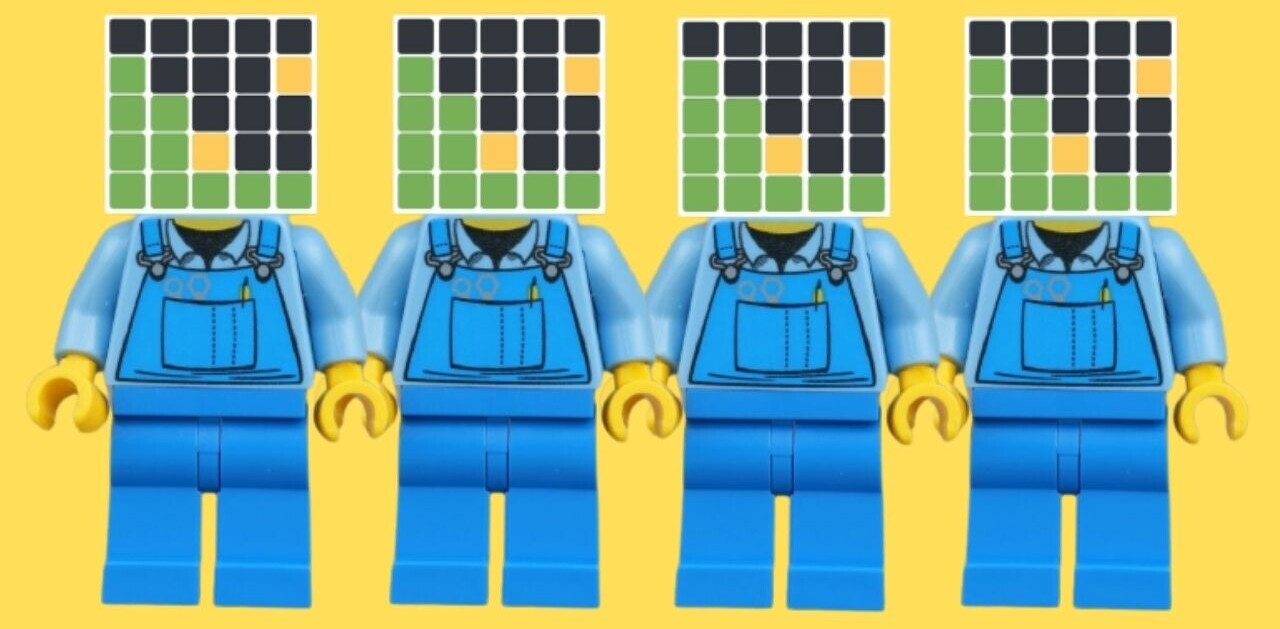
“You push a button, and the world’s yours. You know how they talk about the world getting smaller? Well, it’s thanks to these that it is. Everywhere now is our own neighborhood.”
These words could’ve been uttered last week in relation the Internet. But in fact, this prophetic pronouncement was made by Marshall McLuhan the Canadian educator, scholar and philosopher way back in the hippie sixties. And in case you’re wondering, he was talking about a telephone.
McLuhan was sharp to notice that new media was making the world a smaller place, metaphorically speaking of course. But whilst technology has helped bring the world closer together, some things haven’t changed all that much.
With globalization comes the need for multilingualism, and speaking multiple languages helps bridge linguistic and cultural divides which are the last remaining barriers in creating the global village McLuhan envisaged. But if you were born as a native English speaker, there’s a good chance you’re monolingual, a fact that rears its head whenever you travel the world or simply go on a two-week break to the Mediterranean.
However, everyone else seems to know English, so there’s little incentive to learn a second tongue, especially if multilingualism isn’t instilled in us at a young age. The older we get, the less time we have and the harder it is to pick up new languages.
Countless people say that they wish they’d taken advantage of the language-learning opportunities presented to them at school, but hindsight is a wonderful thing. Growing up as a native English speaker, school is all about Maths, English and Science – foreign languages typically find their way onto the syllabus for a couple of years, but they almost feel peripheral to the subjects that are going to get us jobs when we leave school or university.
There are actually plenty of native English speakers who do speak additional languages, but the point is overall we’re not that multilingual.
The best way to learn any language is to immerse yourself in it, which usually requires living abroad. That’s fine if you’re on a gap-year or your work happens to take you there, but if you’re unable to up-sticks and move abroad, what are your options?
Well, the same technology that has helped make the world a smaller place can also be used to learn any number of languages. So here’s a look at some of the tools available to help you learn and improve your foreign language skills.
The BBC: Learn the basics
The BBC has an excellent – and free – online resource for language-learners. French, Italian, German and Spanish (FIGS) is covered, as well as Greek, Chinese and Portuguese.There are short audio and video courses for starters, including Ma France which is designed for “French improvers”. It contains 24 units with video, key phrases and games, including 12 mini video lessons, weekly tips and many other resources and worksheets. Here’s one of the videos that’s available:
The BBC also offers 12-week beginners’ courses in FIGS, whereby they teach you the basics and send you weekly email tips, this is followed by an ‘end of course’ assessment to see how well you’ve done. Heck, they even send you a certificate once you’ve completed the course.
However, serious language-learners will probably be looking at spending at least some money to ensure their studies are properly structured and, to be honest, if you’ve spent money on something you’re more likely to follow through and learn.
Mango Languages: Teach yourself
Mango Languages offers Mango Passport, which is downloadable language-learning software that teaches basic conversational skills and cultural practices. Its methodology follows what it calls ‘intuitive language construction’, focusing on the four key components of speaking a language: vocabulary, pronunciation, grammar and culture.
Mango is geared more towards travelers and should provide a good foundation to build conversational skills, but it is unlikely to deliver total fluency – that will only happen if you live and breathe a language.
Prices range from around $100-$200, depending on whether you’re looking to learn on the go, or at home. It’s a pretty comprehensive package you get, but you will need to have the dedication to stick to the lessons.
Linkua: Learn online from teachers
“Linkua is a meeting point for people interested in teaching and learning languages. As a student you find language teachers from all around the world and learn from them from the comfort of your home. As a teacher you’ll be able to connect with students and can teach them from home, with total flexibility.”
Linkua is like an online hub to connect with real flesh-and-bone language teachers. And to be honest, unless you’re incredibly self-disciplined, this is likely to be a better route to properly learn a language remotely than with the teach-yourself options.
Linkua sells itself on the following principal: When you are taught a language in a face-to-face situation, 30% of what you think you’re hearing is actually non-verbal gestures. And these visual cues are missing when you subsequently go on to talk on the telephone, thus 30% of the interaction is lost. So, the premise is when you are tutored by telephone you learn to properly hear the voice.
Students pay for their class through Linkua, and then Linkua takes a 20% commission before passing the fee on to the teacher. All teachers charge different prices and you can browse the website and search for the best rates.
So, wherever you are in the world, you can connect with your normal teacher via Skype. But remember, switch the video function off as you’ll actually be losing out by 30% in the long run.
LiveMocha: Combing teachers and a community
“Livemocha is the world’s largest online language learning community, offering free and paid online language courses in 35 languages to more than 9 million members from 195 countries around the world.”
LiveMocha combines language lessons with a virtual community where you can practice speaking with natives from around the world. The community aspect here is collaborative, so whilst you turn to it for help with your chosen language(s), you’re also expected to feed back into the system and give help based on your native language skills. It’s like a social network specifically for language-learners.
The platform is ad-supported and thus is largely free, though you can also pay for lessons too, the prices of which will vary.
http://youtu.be/HOzXI7FYp-8
Rosetta Stone: Professional language-learning tools
Rosetta Stone is one of the biggest brands in the language-learning industry. The boxed software you buy comes in tiered pricing packages, with a starting price of around £139 (GBP) for level 1 (beginners), going up to about £350 for the full 5-level set. Stick to your learning schedule, and you’ll be pretty good at your chosen language after this.
Each ‘level’ comes with interactive software, an mp3 audio companion to learn on the move, a headset/microphone for use on the speech-recognition software, live online lessons, games and apps.
It’s all very professionally organized, and it’s focused on those who are serious about learning languages. But the whole feel of Rosetta Stone is that it belongs to a bygone era – you receive CDs in the box to install the application software on your computer. I’m sure they could keep the costs down on this by making everything virtual, meaning either online or you download the application from their website. But hey, this is all meant to make you feel as though you’re getting a product for your money.
That said, Rosetta Stone has developed an online language exchange network called SharedTalk, which is a similar concept to LiveMocha.
Rosetta Stone does have a couple of apps available for iOS too, one built specifically for iPhone and iPod touch, and one optimized for iPad. Whilst the apps are free, users will need to have an active Rosetta Stone TOTALe account, which you will probably have guessed, isn’t free.
Language Exchange on Facebook
Facebook does everything these days, including helping you to learn languages. Language Exchange is a Facebook app that connects people to other language-learners based on your interests and language needs. Once connected, you can then engage in peer-to-peer language learning. It’s free, and decent enough as a way to meet like-minded people, but if you’re a serious language-learner, then this doesn’t offer the best interface for actually learning.
Memrise: Improve your memory, learn a language
We wrote about Memrise earlier this week. Memrise jogs your memory with visual cues when learning new languages. These essentially hard-wire a word into your mind and the more steps that you take, the better your recollection will be. Testing also takes place whilst you’re using the app – this is a system not only of memorization but also retention.
This is a key point for language-learners who aren’t immersing themselves in a language whilst living abroad. If you’re not using a language all the time, it can be easy to forget what you’ve learned, so the focus here on memory is a good differentiator. Here’s what a typical screenshot would look like if you were learning Mandarin:
Memrise is free to use. And if you’re interested, here’s a little bit more about the science behind the methodology.
Translator: Translate with voice
There are countless mobile apps across all platforms that can help you get by in a foreign language on the fly.Translator helps you translate words and sentences across 53 languages, and it has text-to-speech capability in 35 languages. This is a particularly useful feature to help you learn how to pronounce properly in a language, but it’s also good if you’re lazy, and you can simply play the audio to a taxi driver, waiter or hotel receptionist.
It also has a handy full-screen mode for translations, so you can simply hold up your handset and show the text to someone without the need to actually hand your phone over.
For $2.99, this is a pretty good app and will help you pick up the basics whilst traveling abroad.
Get the TNW newsletter
Get the most important tech news in your inbox each week.







